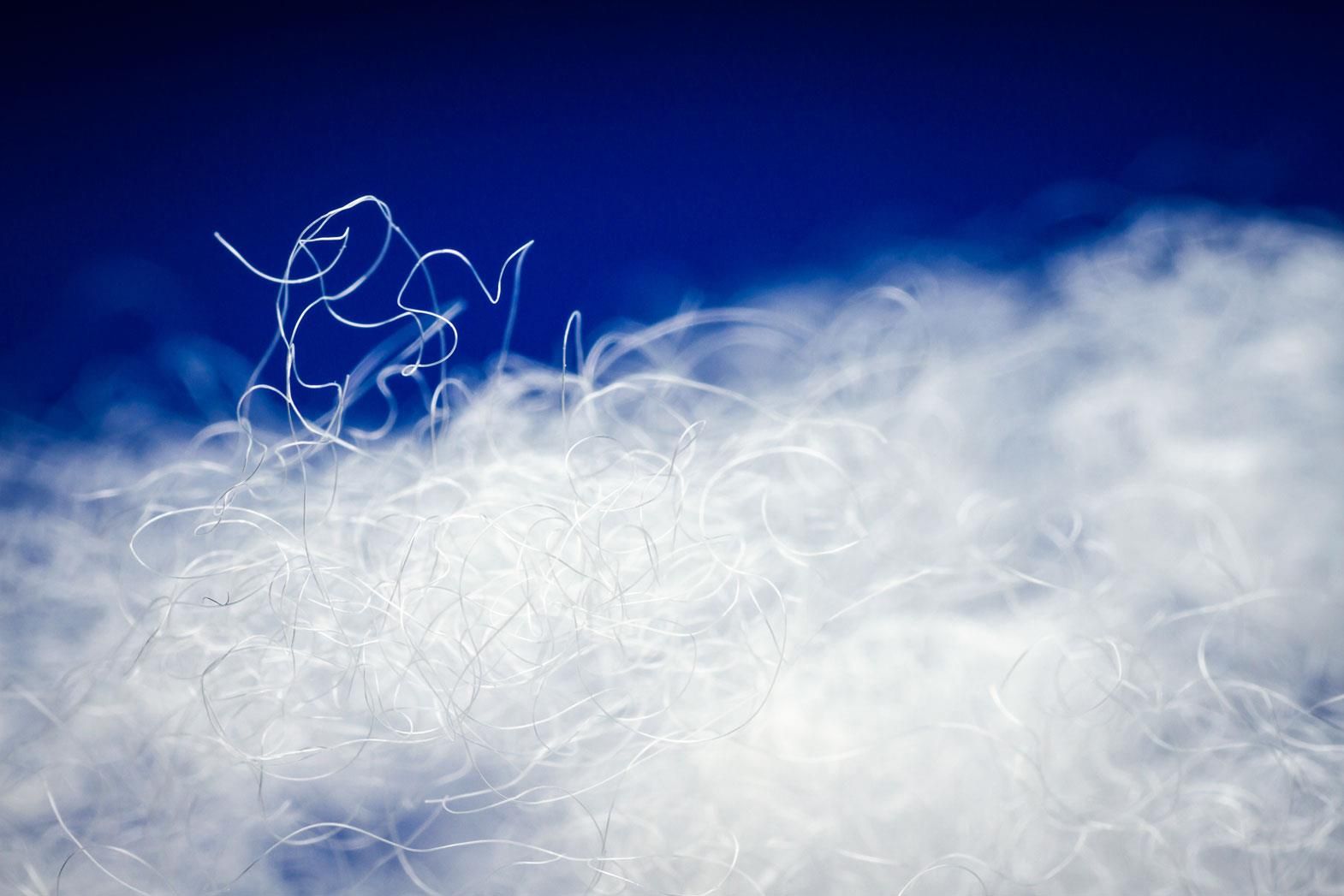In raffia fabrics, the fibres of leaf of raffia palms are woven by archaic technique of vertical loom or oblique loom. The plant belongs to the palm family and it originated from Madagascar. The growth is mostly confined to tropical rainforests, banks of the river Savannah and some other marshes or wetlands. Today the production of raffia can be outlined to Madagascar, Congo, Gabon of Central Africa, Cameroon, Nigeria, and Liberia alongside of the Gulf of Guinea. The dominance of raffia belt can easily be noticed in alongside these areas. The textile industry employs fibre extracted from six different varieties of raffia plants like raffia vinifera, raffia ruffia, etc.
The entire raffia plant is used for various purposes ranging from use in textile to basket weaving to building materials. The unprocessed or unrefined raffia used for tying raffia shanks or sticks and is processed as strings. The twisted fibres are used exclusively as strings by twisting them into a two-fold yarn with the palms and thighs. The leaf stems and axis of a compound leaf or compound inflorescence are utilised in construction materials for houses and furniture, and the leaf stems' skin is used for making baskets after being torn into thin pieces. After collecting the fibres, the skins are dried and used as the core materials of basket weaving.
The fibres that are used in woven fabrics are gathered from the back of the new leaves that have just emerged from the stems and are still closed in a spear shape. The raffia fibres that are to be used for the purpose of woven fabrics are not twisted. The raffia leaves can grow up to 65 feet long and comprise at least 80 leaflets. The leaves' fibres are torn into small strips and dried in the sun; its soft, pliable, strong nature is perfect for all kinds of uses. The natural colour of the fibre is yellow-tan hue, which is eye-catching. However, today the fibers are often dyed in other colours, thus making the material perfect for a variety of crafts.
There is certain kind of exclusivity associated with raffia fabric, as it has long been linked with elitism and royalty. In some cases special ceremonial costumes are made from raffia fabric and this practice is popular among some ethnic groups of Central Africa from the coast of the Gulf of Guinea. There have also been some recent developments in use of raffia fabric. The areas where predominantly cotton fabrics are produced, some ethnic groups weave raffia for their adulthood ceremony and raffia fabrics exist as the 'authentic' fabric of these tribes prior to cotton fabrics as well as bark fabrics. The raffia fibres are still widely used and are sold in various places from the savannah region at the South end of the Sahara, in which raffia does not grow, to the coastal region of Guinea.
The decline in use of raffia fabric can be attributed to the rise in use of imported synthetic fabrics. However, the fashion world continuously relies upon using raffia fabric in modern day designs of garments, footwear, bags, hats and also in home furnishings. This year spring season will definitely witness a lot of fresh prints and fabrics, and many bigwigs in the fashion world have shown inclination towards using raffia fabric in garments to come up with innovative and fresh look. The flawless straw-like natural raffia material is a perfect choice for the designers who want to experiment with ethnical and tribal prints. While the raffia fabric is a natural selection for floppy hats and beach bags, there are also unexpected ways to wear this trend. Structured dresses made out from raffia fabric for beachside cocktail parties to casual tribal-print dresses and shirts are something to look forward to this season.
Such innovations involving the natural raffia fabric have been an instant success in past also. Countries like Canada, European Union, the U.S.A., some parts of Asia import raffia yarn to be used for multiple purposes. The clothes made from raffia fibre are unique in appeal. Also, raffia is often preferred over other fabrics by the craftsmen, as it is natural, easy to dye, skin friendly, non-allergic and it is also soft yet durable. Often, it is used in clothes and accessories that are meant to be worn in outdoor activities, as the raffia fabric doesnt shrink when it comes in contact with moisture, yet it is flexible enough to woven easily into a fabric or other accessories.
Raffia fabrics are among the few other rich fabrics that bestow upon the garment an unparallel appeal without being cruel on the nature. The production of the fibre is simple and its end users are many. These factors have ensured that today raffia fibres are used in various parts of the world and used in products ranging from hats to rich evening dresses. It is a fabric that can make any moment special and thus it is reserved exclusively for special occasions.
References:
1. Wisegeek.org
2. Globalnaturalfibres.org
3. Edenproject.com
4. Jaicaf.or.jp









Comments